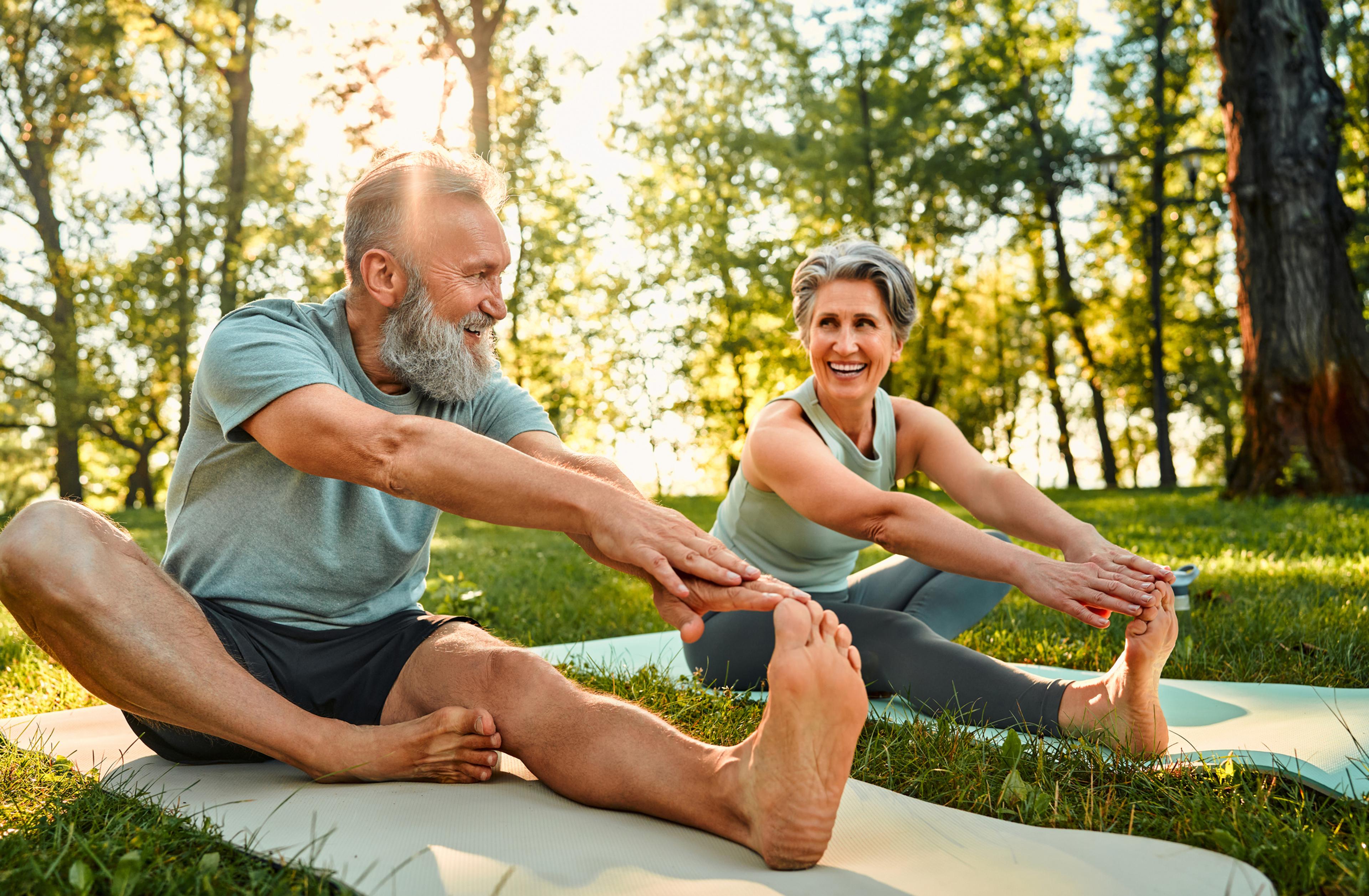How to Protect Joints as You Age

Blue Daily
| 3 min read

More than 50 million Americans have arthritis, with the number expected to increase as the population ages and lives longer. As the body ages, joints can ache or deteriorate due to a variety of factors, including stiffening of the cartilage in the joint, a loss of cartilage, loss of bone density or bone mass, arthritis and wear and tear from years of use. Here are some healthy ways to counteract aging joints and the associated aches and pains.
Get the right amount of low-impact exercise.
Exercise is important for maintaining joint health as we age. Exercising increases joint strength and improves balance and energy levels. The best types of exercise for arthritic and aging joints include range-of-motion exercises, strength training, balance training and aerobic exercise. It is easier on your joints and more comfortable the lower impact the exercise is. Swimming, water exercises, walking, Tai Chi, yoga, Pilates or stationary bikes and elliptical machines are good examples of low-impact exercises.
Maintain a healthy weight.
Our joints, especially knees and ankles, do a lot of heavy lifting each day to move our body around. Carrying excess weight can have a negative effect on joint health. Obesity contributes to soft tissue damage, osteoarthritis, and general wear and tear on joints. Each pound of body weight contributes four to six pounds of additional pressure on each knee joint. Maintaining a healthy weight reduces pressure on the joints and reduces the risk of other conditions that can affect joints, such as diabetes and heart disease.
Wear the right shoes and footwear.
Make sure your footwear is comfortable and suited for the activity or exercise you are taking part in. Ill-fitting shoes or shoes with little to no support can increase joint pain and inflammation. If you are walking or moving around, shoes should be both stabilizing and cushioning. If you stand for extended periods of time, make sure shoes have support and cushioning in the sole and can shift weight between the heel and ball of the foot.
Eat a healthy diet for bone health.
For bone and joint health, a diet rich in calcium and vitamin D is recommended. There are also foods to avoid that reduce inflammation and pain in the joints, especially if arthritic. Foods that contribute to inflammation that should be avoided or minimized include added sugars, omega-6 fatty acids, saturated fats and trans fats, high sodium foods, and nightshades, such as tomatoes, peppers, eggplants and potatoes.
Stop drinking and smoking, if you do.
Drinking and smoking both contribute to inflammation throughout the body and reduce the body’s ability to repair and heal. Smoking can also work against medications and therapies by fighting against the immune system and can disrupt the gut microbiome. Smokers also have a higher risk of developing rheumatoid arthritis, even if they aren’t genetically predisposed to.
Drinking increases the risk of developing osteoarthritis and can make osteoarthritis symptoms worse. Alcohol consumption also correlates with worse cartilage and joint health and increased inflammation in joints.
Healthy joints allow for an active healthy lifestyle, affecting mobility, exercise, independence and ability for aging Americans. Joint pain and arthritis can contribute to stress and anxiety. Taking good care of joint health can lower the risk of a sedentary lifestyle and allow for increased exercise, which in turn lowers the risk of depression and anxiety.





